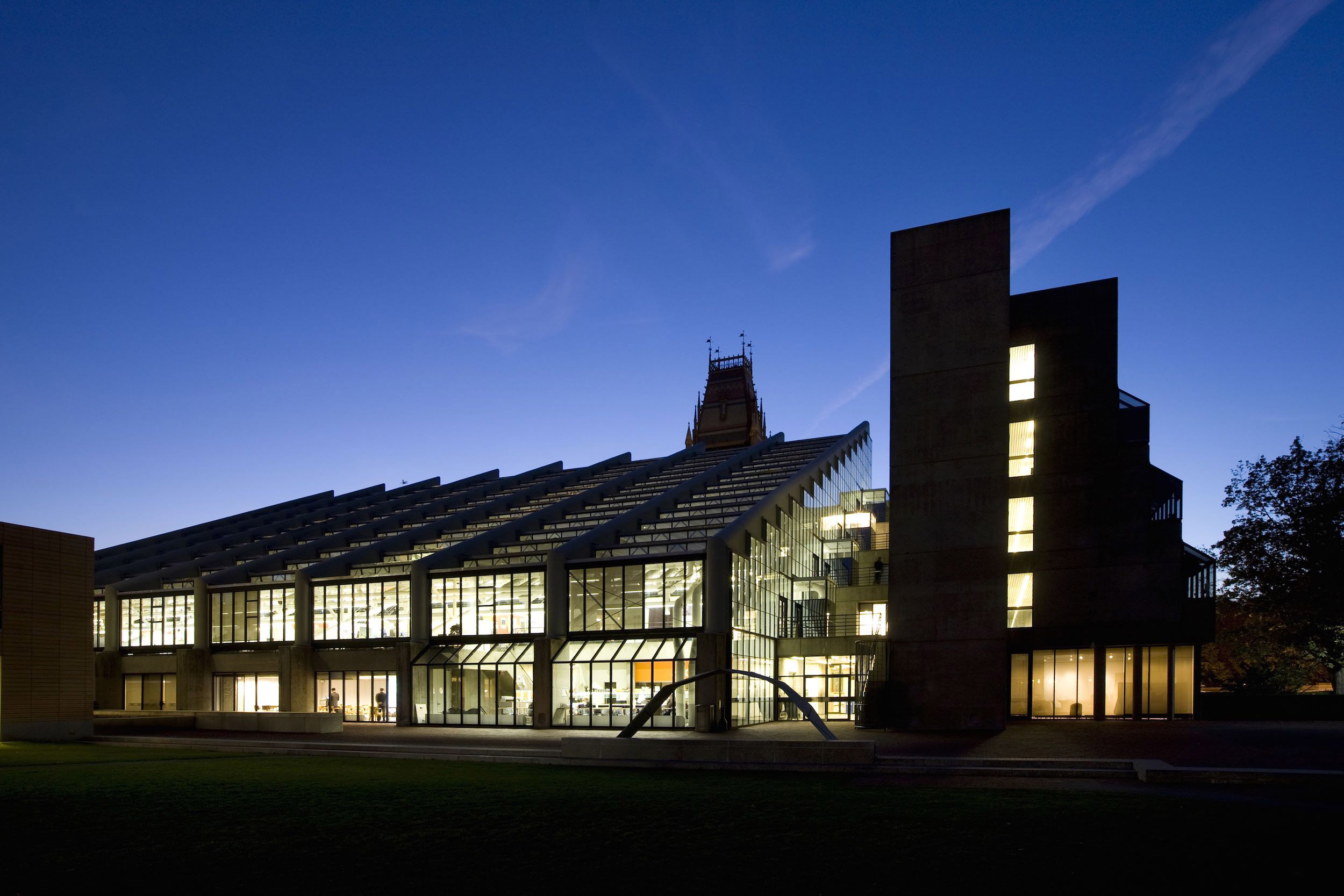
The proposed expansion of the Graduate School of Design is to be integrated into the heart of the School’s existing structure, Gund Hall.
Courtesy of Harvard Graduate School of Design
Harvard’s GSD selects architects for proposed expansion
Project designed to advance School’s commitment to cross-disciplinary collaboration and innovation
Harvard Graduate School of Design’s (GSD) primary campus building, Gund Hall, will undergo a significant transformation, bringing it into the 21st century as a center of design education and innovation. The proposed expansion would include new space to be integrated into the heart of the School’s existing structure. The reimagined facility will embody the School’s visionary and cross-disciplinary work at the intersection of design, pedagogy, research, and practice.
The GSD has selected the Basel-based architectural firm Herzog & de Meuron, design consultant, and New York-based Beyer Blinder Belle (BBB), architect of record, to design the expansion.
As a global leader in each of its fields, the GSD is redefining the future of design as a response to increasingly complex issues faced by cities and ecologies, people and places around the world. This innovative approach involves a cross-disciplinary collaboration among the School’s departments of architecture, landscape architecture, and urban planning and design, as well as its doctor of design, doctor of philosophy, master in design studies, and master in design engineering degree programs. This approach also represents a deepening engagement with other academic fields, including medicine, business, government, public health, and the humanities, and degree programs with Harvard’s John A. Paulson School of Engineering and Applied Sciences and T.H. Chan School of Public Health. This, along with the growth of the School, has expanded the scope and purpose of the GSD’s pedagogy and mission.
“The GSD’s groundbreaking collaborations with theoretical and applied disciplines, and other professional Schools at Harvard, bring collective expertise to bear in addressing the most pressing social and environmental challenges of our time through design innovation,” said GSD Dean Mohsen Mostafavi, Alexander and Victoria Wiley Professor of Design. “Herzog & de Meuron and BBB have carefully studied and observed the School’s many qualities and characteristics, and they have a bold design vision for the GSD and its engagement with other disciplines and professional Schools across Harvard, and for its impact on the world. We are excited to collaborate with both firms on the creation of an important and dynamic center for design innovation here at the GSD.”
The proposed space will encourage new forms of cross-disciplinary collaboration by creating an anchored point of intersection among the School’s current studio workspace (known as “the trays”), faculty and departmental offices, seminar rooms and classrooms, research library, production and fabrication facilities, and new interior spaces designed for informal meetings, social gatherings, and public programs. The addition is expected to add only a minimal amount to Gund Hall’s physical footprint, eliminating the need for additional land and preserving the School’s green space and basketball court.
“Since the 1980s we have been in close contact with Harvard GSD for teaching and research projects,” said Jacques Herzog and Pierre de Meuron, founders and senior partners of Herzog & de Meuron. “We’ve met several generations of professors, staff, and students. We learned from the talent and excellence of many of those people from across the world. Also, we have always admired the intellectual spirit and free-thinking atmosphere of the School, with its mythic Gund Hall building. We envision transforming this building by excavating, adding, and connecting spaces that will support communication and exchange within the GSD community. We are very excited to be awarded this project, and look forward to working with all our friends and dear colleagues in the years ahead.”

BBB and a series of consultants will collaborate with Herzog & de Meuron to design the project, to which both firms bring significant institutional experience. BBB’s work at Harvard spans more than 14 years, including the recent renewal of Winthrop House and Adams House. Herzog and de Meuron have previously taught studios and presented a number of public lectures and exhibitions at the GSD over the past three decades.
“We are excited to continue our work on Harvard’s campus, and to be partnering with Herzog & de Meuron. The Gund Hall project goes beyond expansion, to revisioning a building that is both professionally important and personally meaningful to us as designers,” said Elizabeth Leber, a partner at BBB. “It resonates with our firm’s philosophy of sustainable transformation of existing buildings to adapt to many types of change.”
The architects were selected through a two-stage process organized by Harvard University. The designer selection committee included GSD faculty and staff members, together with University-appointed design advisers. Concept and schematic design development for Herzog & de Meuron’s proposal has commenced and will continue through the summer, and is anticipated to be completed this fall. The launch of the expansion was made possible by a generous gift by Ronald M. Druker. The GSD will work to secure further philanthropic support for this proposed project.
Designed by Australian architect and GSD graduate John Andrews, Gund Hall opened in 1972. The facility offers a stimulating environment for the School’s 900-plus students, 100 regular and 70 visiting faculty, and 150 staff, and includes studio and office areas; lecture and seminar rooms; workshops and darkrooms; an audiovisual center; computer facilities; a cafeteria; a project room; Piper Auditorium; and Frances Loeb Library.
The yard area is used for outdoor activities; as an exhibition area for class projects; and as the setting for Commencement ceremonies. The central studio space extends through five levels under a stepped, clear-span roof that admits natural light and provides views toward Boston. The dramatic facade and extensive glass surfaces make an eloquent statement about the design excellence and professional creativity for which the School is known.




